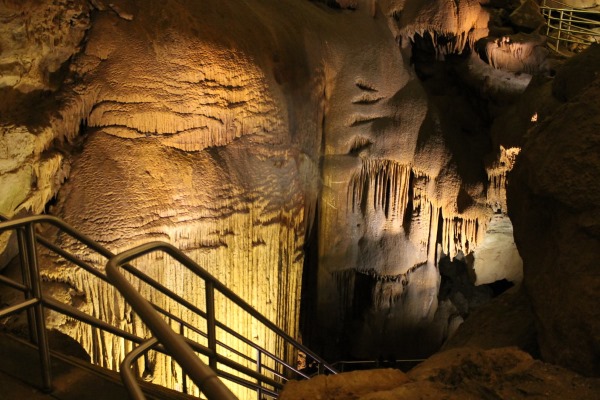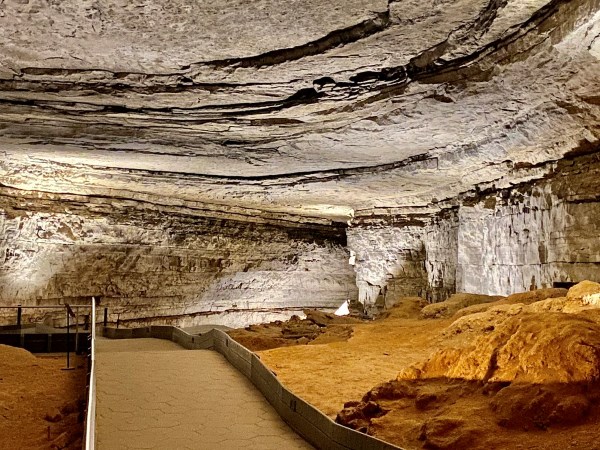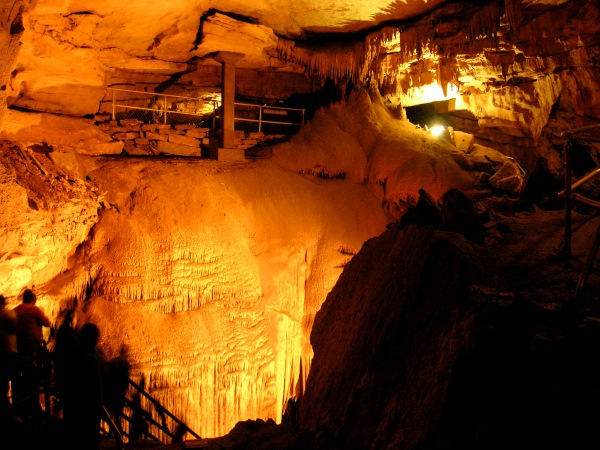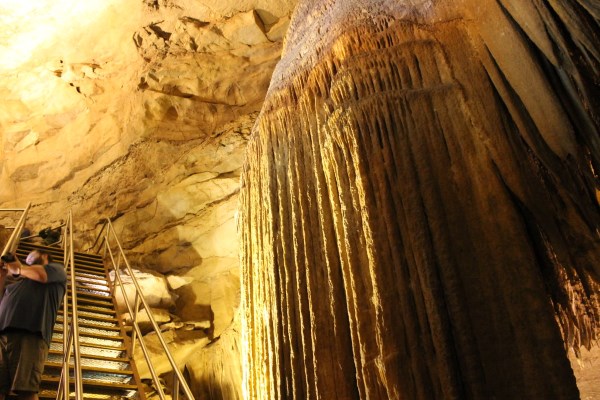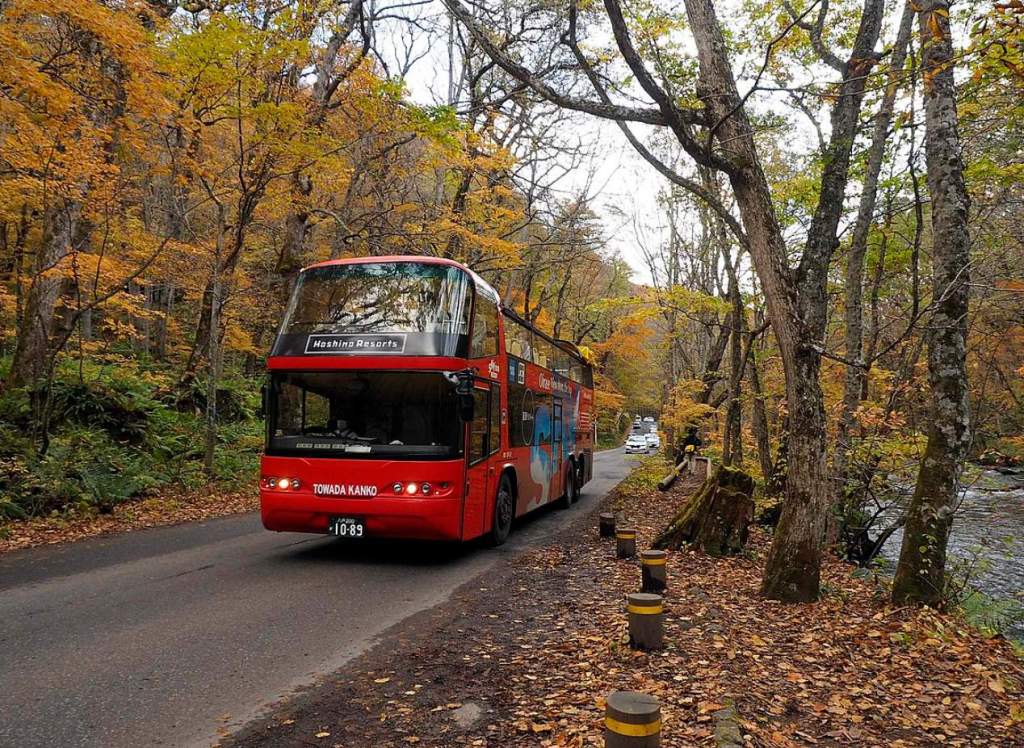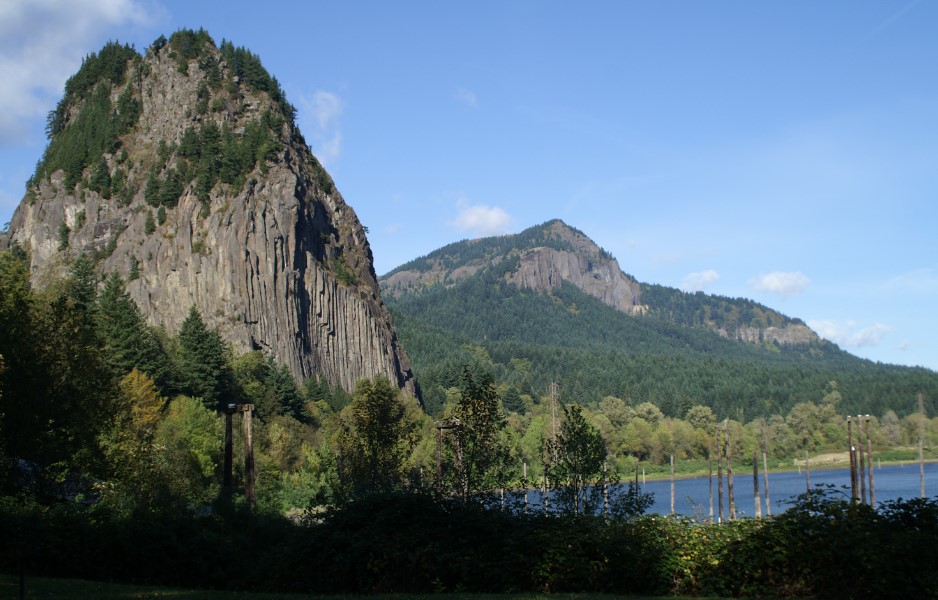Mammoth Cave National Park is the longest-known cave system in the world. Deep within the cave’s vast subterranean world, there are five overlapping and interlinked levels, with four rivers, eight waterfalls, one lake, and one “Dead Sea.” Mammoth Cave maintains a constant temperature of 54 degrees Fahrenheit (°F) every day of the year.
There are giant vertical shafts, from the towering 192-foot (58-meter)-high Mammoth Dome to the 105-foot (32-meter)-deep Bottomless Pit. The Green and Nolin Rivers course through the system, creating new caverns, as well as the underground Echo River and the River Styx that flow through Mammoth Cave’s deepest chambers.
Some passages and rooms are decorated with sparkling white gypsum crystals, while others are filled with the colorful, sculpted shapes of stalactites, stalagmites, and other cave formations. In the absolute blackness of the cave dwell many rare and unusual animals, including eyeless fish, ghostly white spiders, and blind beetles.
The Kentucky Cave Shrimp is an endangered species that is only found in Mammoth Cave National Park. Mammoth Cave is the most elaborate and longest recorded cave system in the world, with the oldest human artifacts dating back 4,000 years. The cave system has more than 336 miles (541 kilometers) of explored and mapped passages. Some of the first people to explore Mammoth Cave were the Adena mound builders and migrating Woodland Indians, who first wandered into the cave around 4,000 years ago.
It is not likely that they lived in the cave but only explored it and extracted various minerals useful for making their medicines or paints. At one location in the cave, two Indian mummies were found, along with well-preserved prehistoric artifacts, including woven sandals.
By locating several other Indian artifacts in different parts of the cave, archaeologists can determine that the early explorers ventured almost a mile into the cave. It is believed that the early explorers were primarily in search of the mineral gypsum to make paint. In 1935, some early guides accidentally discovered the mummified body of an ancient gypsum miner. He was killed when a five-ton, 4,535-kg boulder landed on him as he was chipping away minerals from the cave wall.
The ancient miner’s body, affectionately known as Lost John, was remarkably well preserved because of the cave’s constantly cool temperatures and stable humidity. Although explored by Indians as early as 2,000 BCE, the “historic entrance” to the cave was not discovered until a hunter stumbled upon it in 1790 while tracking down a bear. Rumors and stories proliferated for a decade about the massive cave until verified reports announced it to the rest of the world.
During the War of 1812, slaves were put to work mining the cave for saltpeter, a main ingredient in gunpowder. It also served briefly as the site of an experimental tuberculosis hospital during the winter of 1842–43. A local landowner, Frank Gorin, acquired the cave in 1838. One of his black slaves, Stephen Bishop, became one of the first guides and made many important discoveries within Mammoth Cave.
Stephen Bishop was one of the first people to draw an accurate map of Mammoth Cave and is credited with discovering the Echo River, Mammoth Dome, the Snowball Room, and the blind fish from Echo River. Mr. Gorin sold the cave to Dr. John Croghan, who made further improvements to Mammoth Cave as a tourist attraction. In 1908, Ed Bishop, Stephen Bishop’s grandnephew, made more important discoveries within the cave.
He discovered Violet City, Kemper Hall, and Bishop’s Pit, and with the help of a German visitor, Ed Bishop made an even more detailed and accurate map of Mammoth Cave. The “Historic Cave Tour” led by National Park Service guides covers the whole history and famous caverns.
As a testament to its importance, Mammoth Cave was authorized as a natural park in 1926, received National Park status in July 1941, became a World Heritage Site on October 27, 1981, and was designated an International Biosphere Reserve on September 26, 1990.
Mammoth Cave National Park is located in the town of Mammoth Cave off Interstate 65 on Highway 259 in central Kentucky. There is an admission fee for the various cave tours, and reservations, especially for the popular “Wild Cave Tour,” are strongly recommended.
